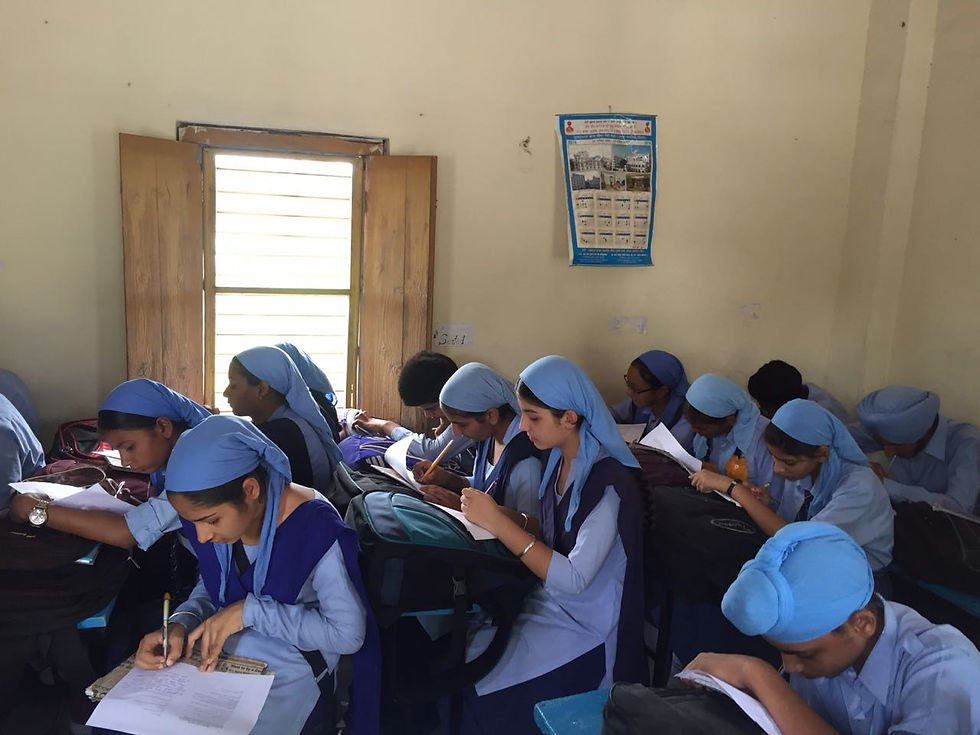Their eagerness, Our Motivation
- Jasleen Kaur
- Jul 18, 2018
- 3 min read
As the melting hot days of Punjab’s summer make stepping out more difficult, the curiosity and perseverance of students continue to inspire us every day. Our motivation to fight the heat is their eagerness to learn. While the past week focused on introductions, pre-workshop surveys, and visiting de-addiction centers in Amritsar, this week we delved deeper into what addiction and drugs are.

The pre-workshop surveys revealed that many students in 8th, 9th, and 10th grades could not differentiate addiction and drugs. As a result, we chose activities that focused on viewing each as a separate thing. When we asked students from each grade to define drug, “chitta” (white) was the most common answer. It was important to explain that not all drugs are bad and that addiction can also occur with social media, phones, and gambling.
Our next focus was to explore the different parts of the brain. We were shocked to learn that each grade had never learned about the brain before, and they didn’t know that the brain also has different parts that have unique functions. Their questions and remarks showed how excited they were to learn about the brain for the first time. Because of the load of new vocabulary, the next day we did a review activity in which the students had to write a paragraph explaining everything they have learned, but in words that their parents would understand. An example of a response from 9th grade is attached to this blog.

The rest of the week focused on learning about the short and long-term effects of drugs. By the end, students were able to identify three different types of drugs based on their short and long-term effects. Along with presenting new learning material, our aim is also to destigmatize and decriminalize drug addiction. By explaining the science, we are aiming to demonstrate why it is not always the addict’s fault. We hope that this will give students a new perspective on this issue that they will retain for the rest of their lives.
We will continue the workshops for the next two weeks, but we also want to spend more time at de-addiction centers and talk to people to gain more information about the root causes of drug addiction problem in Punjab. The goal is to survey current addicts, former addicts, their friends and family members, police officers, and more.
Translated response from a group of 9th grade students
Mom and Dad, today I studied about parts of the brain. Harveen and Jasleen taught us new concepts in a really good way. We also learned about addiction. Harveen taught us that addiction is a disease which when begins, is almost unstoppable. They also taught us the definition of a drug. We learned a lot of new things out of the discussion. Jasleen and Harveen also taught us about the different parts of the brain. They told us that the brain has many different parts. One is the cerebral cortex. What we see, hear, touch, and feel, is controlled by the cerebral cortex. Today, we learned about five of the main parts of the brain. One of the main parts is called nucleus accumbens. Harveen told us that it is also called the reward pathway, which means that when we eat or drink, we feel good. In this process, there is a chemical called dopamine. It is called the “feel good chemical”. When one takes drugs, then a lot of dopamine receptors form, because of which dopamine runs out really quickly, and one feels bad. When we eat roti, then receptors take in the dopamine slowly, which is why we feel good.





Comments